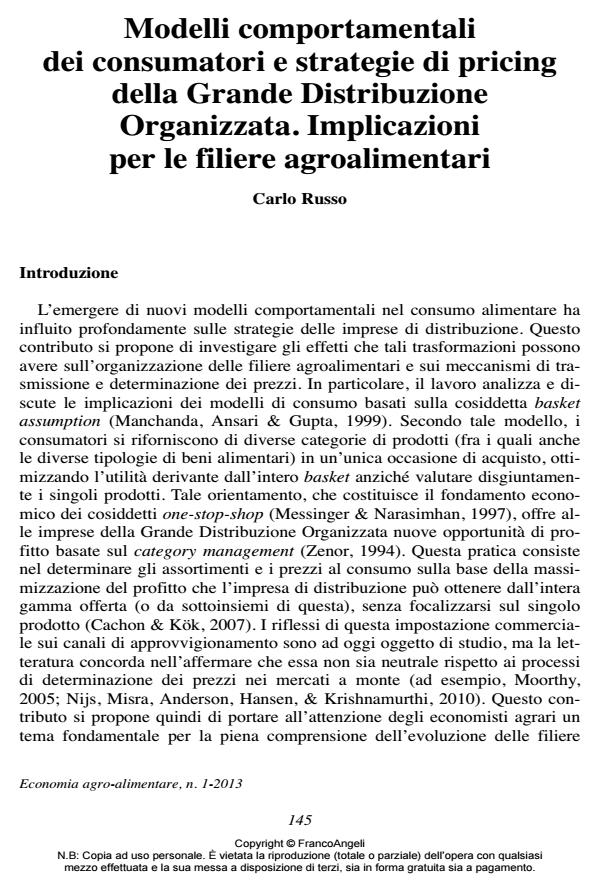Consumer behavior and supermarkets pricing strategies. Implications for the Agrifood system
Journal title ECONOMIA AGRO-ALIMENTARE
Author/s Carlo Russo
Publishing Year 2013 Issue 2013/1
Language Italian Pages 11 P. 145-155 File size 112 KB
DOI 10.3280/ECAG2013-001007
DOI is like a bar code for intellectual property: to have more infomation
click here
Below, you can see the article first page
If you want to buy this article in PDF format, you can do it, following the instructions to buy download credits

FrancoAngeli is member of Publishers International Linking Association, Inc (PILA), a not-for-profit association which run the CrossRef service enabling links to and from online scholarly content.
The paper discusses the implications of the emerging consumers behavior model for agri-food price distribution. The motivation of the study lies in the increasing relevance of the so-called basket-shoppers, who are consumers willing to buy multiple categories of products (including food) in a single shopping experience. Their purchasing decisions are based on making the maximum use of the whole basket, regardless of the individual products which go into it. This social change has prompted adaptations in the retail industry and the emergence of strategies based on one-stop-shops and category management. Such strategies focus on the joint profit maximization of the contents of the consumer’s entire basket, without considering the margins on individual products. The paper develops a simple theoretical model to describe the implications of such adaptation on agri-food price trends. In particular, the paper shows that if the retail industry consists of firms adopting category management techniques, food prices are less elastic and less correlated to the prices of agricultural products than they would be in the absence of such practices. Also, the model shows that agricultural price volatility increases and the margin on goods with inelastic demand (such as food) increases.
Keywords: Basket shoppers, category management, agricultural and food prices
Jel codes: Q11, Q12
Carlo Russo, Modelli comportamentali dei consumatori e strategie di pricing della Grande Distribuzione Organizzata. Implicazioni per le filiere agroalimentari in "ECONOMIA AGRO-ALIMENTARE" 1/2013, pp 145-155, DOI: 10.3280/ECAG2013-001007